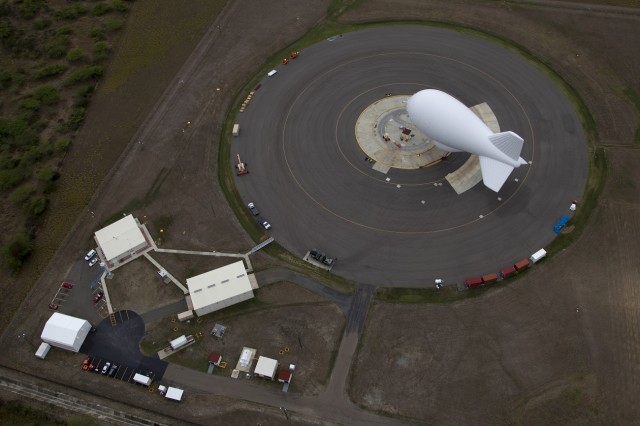The U.S. Customs and Border Protection (CBP) Office of Air and Marine Operations officially launched last Friday the Tethered Aerostat Radar System (TARS) within its previous location in the southwestern coast of the island of Puerto Rico.
The Governor of the Commonwealth of Puerto Rico, Honorable Alejandro Garcia-Padilla, as well as representatives of various federal, state, and local partners, received a first-hand look into the operation of the TARS.
“By restoring the Tethered Aerostat Radar System program, CBP will have an additional asset to continue our collaborative operations and partnerships with other federal, state, and local law enforcement in the Caribbean,” stated Johnny Morales, director of air operations for the Caribbean Air and Marine Branch.
CBP recently assumed responsibility for the TARS from the U.S. Air Force (USAF). In August 2011, the former TARS crashed near its location in the municipality of Lajas, due to severe weather.
The aerostat-borne surveillance system — operating in the U.S. since 1978 and in Puerto Rico since the late 1980’s — provides radar detection and monitoring of low-altitude aircraft and surface vessels along the U.S.-Mexico border, the Florida Straits, and the Caribbean Sea and Mona Passage.
USAF and DHS personnel began the formal transfer of the TARS program, contracts, and operations responsibilities in March 2013. On July 1, 2013, CBP assumed official program and contract management responsibilities and have assumed all funding requirements in FY 2014.
The program consists of eight TARS aerostat sites with six along the Southwest Border (Yuma and Ft Huachuca, AZ.; Deming, NM; Marfa, Eagle Pass, and Rio Grande City, TX) and additional sites in the Florida Keys and Puerto Rico.
The TARS will augment fixed radar systems that currently support the Caribbean Air and Marine Operations Center, a component of CBP’s Office of Air and Marine Operations, which provides detection, monitoring, sorting, tracking and coordination of law enforcement response to suspect airborne and maritime activity at, beyond, and internal to America’s borders.
The Office of Air and Marine (OAM) is the world’s largest aviation and maritime law enforcement organization, and is a critical component of CBP’s layered enforcement strategy for border security. OAM is uniquely positioned to provide direct air and maritime support to multiple agencies and to ensure the success of border protection and law enforcement operations between ports of entry, within the maritime operating areas and within the nation’s interior.
Photo: TARS site, Lajas, Puerto Rico – U.S. CBP
Source: Government Security News

